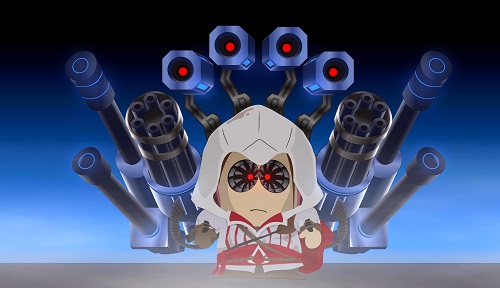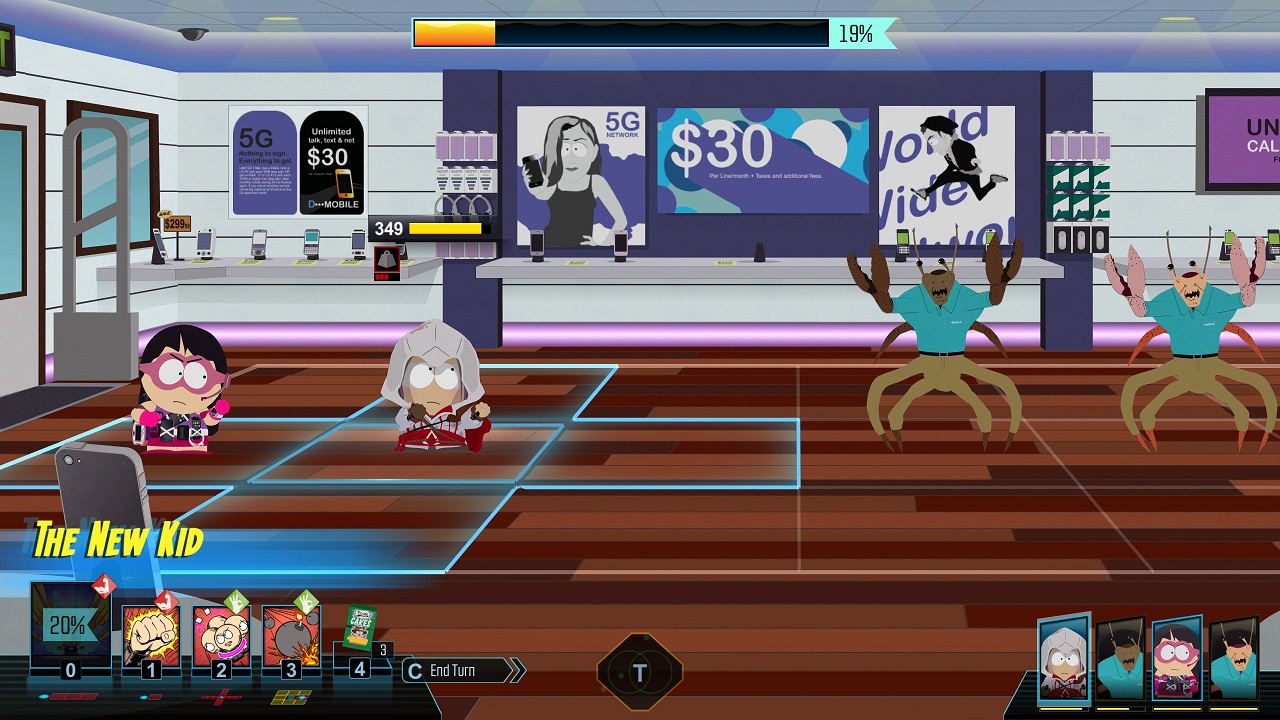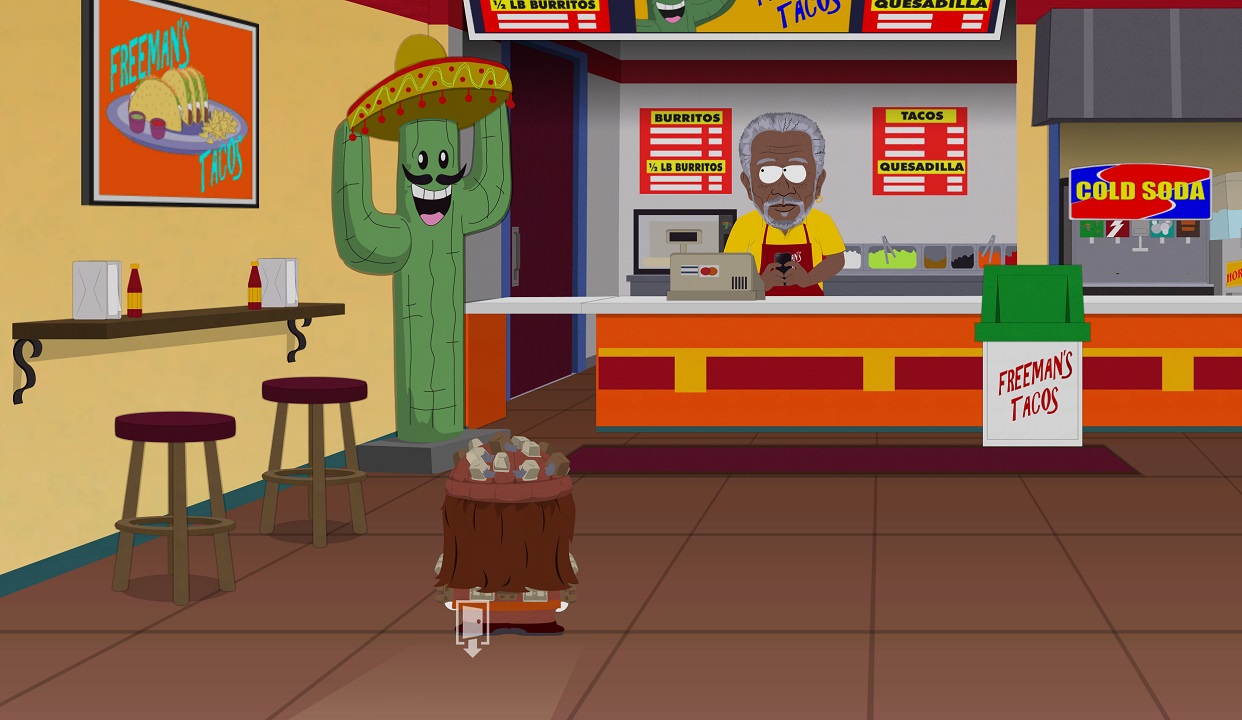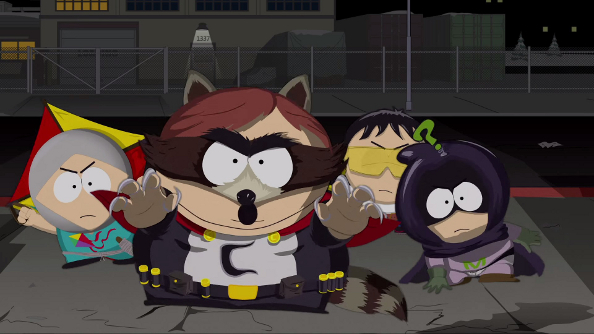
While others cringe and recoil at the very mention of South Park, I’ve long been a massive fan of the lewd and crude humour of the show. With political incorrectness and current affairs always at the front, South Park tackles its subjects with an irreverence that is unmatched in the medium. This is also true of gaming, where no game (even South Park games) matches the level of irreverence that Matt and Trey’s baby has shown over the last two decades. That was until South Park: The Stick of Truth came along. The Stick of Truth perfectly encompassed the myriad of parts that make South Park what it was, effectively resulting in a 12 hour long interactive episode of the show. Now, Ubisoft are back with a second South Park adventure, South Park: The Fractured but Whole, and while the game improves on The Stick of Truth mechanically, it doesn’t quite meet the standard set by the first game.
While The Stick of Truth was lauded for its story and humour, it was held back by the relatively weak mechanics of the game itself. Combat was largely shallow, with the same actions constantly repeated, and there were imbalances that were too easily abused and made combat irrelevant. Yes, I’m talking about bleeding your opponents as a rogue. This is where The Fractured But Whole makes a marked improvement on its predecessor. With the introduction of a tactical grid, not dissimilar to that found in strategy RPGs, character positioning, ability range and status effects become incredibly important. Did your ally just get hit by an attack that left them shocked? Well, you’ll want to get them away from you once they complete their next action, as they send arcs of electricity that damage adjacent allies on their next turn. Are there two enemies next to each other? Using an attack with knockback throws them into each other, damaging both at once.

This new combat system ties in well with the new super hero theme, as the New Kid gradually unlocks more and more classes as the game progresses. This allows you to constantly mix and match your abilities, with an ever-increasing freedom in what you can select and use. It’s perfectly reasonable, and maybe even expected, that your character will be completely different in how it’s utilised in combat by the end of the game. The equipment system of the game increasing this freedom even further, as you craft, find and buy a range of modifications that power up different abilities and stats. You can make a character akin to a glass cannon, brittle but with a massive destructive capability, focus on increasing the damage caused by status effects and a myriad of other options as well. While The Stick of Truth’s combat fell to pieces under a microscope, it’s now the strongest aspect of The Fractured But Whole.
Once again, Ubisoft have crafted the town of South Park and its inhabitants in perfect imitation of the show. It really does look like you’re playing an episode of the show and the lack of complex textures and models meant that the game ran at a near constant 144fps, the maximum refresh rate my monitor can hit, on my PC. While the game looks great, its simplistic nature and excellence performance make the game’s lack of large environments all the more apparent and confounding. While loading screens were nearly instantaneous on PC, it feels weird to play a game like this and hit 3 or more loading screens while going from one end of the town to the other. To be clear, this is the equivalent of a few hundred metres at most on the map. I can’t think of any logical reason as to why the town couldn’t have been a more open area, with no loading screens.
This disappointment continued into the general level design of The Fractured But Whole, which is much more pedestrian than The Stick of Truth. Unlike The Stick of Truth, where you explored some unusual and unorthodox environments, The Fractured But Whole’s dungeon equivalents are almost entirely just the insides of buildings in the town. Potentially, The Stick of Truth used too many of the show’s more recognisable and unorthodox settings, leaving The Fractured But Whole with no choice but to use some less inspiring and absurd locales. There are a couple of late environments that are a surprise and a bit more interesting, but a couple of these are almost completly unexplorable.

On the other hand, this more pedestrian approach may have been due to the game’s chosen theme as it’s a problem that is apparent in the story as well. While The Stick of Truth leaned heavily on the absurd, the whimsical and the humorous aspects of South Park, The Fractured But Whole instead goes for a more grounded approach. While it’s obviously still absurd that we have two groups of fourth graders fighting for dominance, taking on criminal organisations and the like along the way, it lacks the whimsy of the show. Jokes seem to come less often, more drama is heaped into the story and the absurd humour is often relegated to the background as the same fart joke is made for the umpteenth time in a few hours. While the series has always had a plethora of anus related jokes, at times it almost feels as though those are the only jokes being made in the game. It’s disappointing to say, but The Fractured But Whole rarely made me laugh, instead leaving me somewhat bemused and confused on how I felt about the story.
While the story missions in The Fractured But Whole largely take place in some less-inspiring locations, the content inside them is better. You’ll take on quite a few groups and organisations during your time in South Park, and those groups are set up to gradually expand your repertoire of puzzle solving abilities and layer them together. You’ll gradually unlock context sensitive field abilities that unlock more areas and expand the number and style of puzzles that can be found in each environment, however, by the end of the game even these begin to be repeated constantly. The real issue though, is the game’s side-quests. These are almost invariably fetch quests or simple quests that simply have you walk to an area and complete a battle or puzzle. There’s no real variety, which left me less and less inclined to do them as I got further into the game. A bit more variety would have gone a long way, which is unusual to say considering I completed the game and most side-quests in under 14 hours.
It’s obvious that Ubisoft listened to fans feedback on The Stick of Truth, with the weaker aspects of that game having been improved for The Fractured But Whole. Unfortunately, it’s the things that were done well in the first game that have slipped in this one. While The Stick of Truth felt like an extended, interactive, episode of South Park, The Fractured But Whole instead feels like an external story that just happens to be taking place in the show.
- Combat is deeper and more satisfying than the last game
- Freedom of character build feels great
- Looks just like the tv show
- Environments feel uninspired
- Story feels a tad too serious
- Segmented nature of the world is frustrating
- Side quests are repetitive and frustrating



